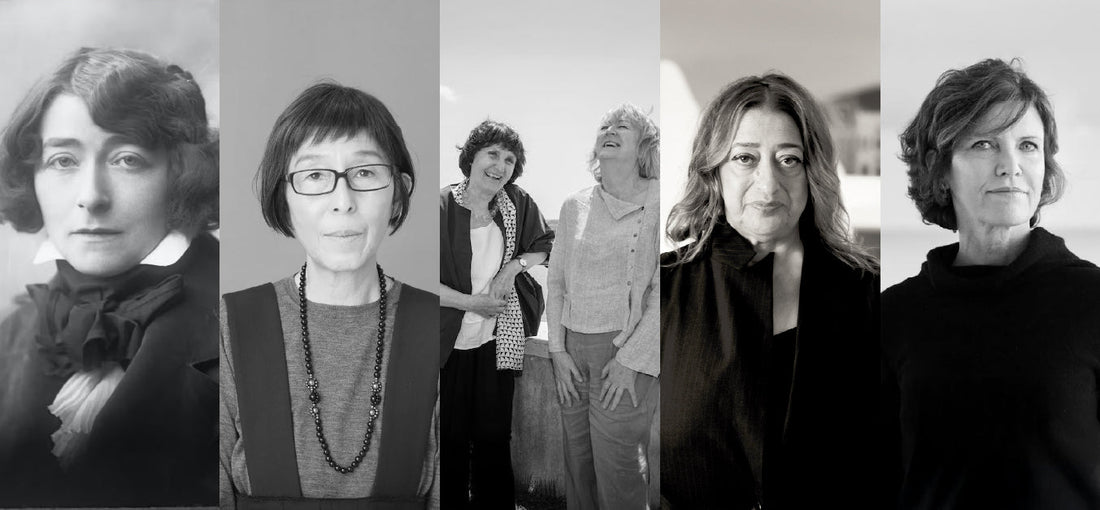
The story of women in architecture is one of quiet determination and revolutionary vision. When Julia Morgan became the first woman admitted to the École des Beaux-Arts in 1898, she opened a path for future generations. Morgan went on to create over 700 buildings, including the magnificent Hearst Castle, demonstrating that extraordinary talent can flourish despite societal constraints.
Eileen Gray worked in similar obscurity for years. Her E-1027 house, with its ingenious built-in furniture and thoughtful attention to human needs, brought a profound sense of livability to modernist principles. Her work whispered that buildings should be designed from the inside out, considering the people who would inhabit them rather than adhering to abstract theories.

Eastern Visionaries: Harmonizing Tradition and Innovation
In Japan, Kazuyo Sejima's minimalist aesthetic has redefined contemporary architecture. Co-founder of SANAA, her buildings—like the ethereal Glass Pavilion at the Toledo Museum of Art—seem to dissolve boundaries between inside and outside, creating spaces of extraordinary lightness. Her 2010 Pritzker Prize recognized a distinctly feminine sensibility that values transparency and subtle relationships over monumental statements.
India's Brinda Somaya pioneered conservation architecture in Mumbai, preserving historical buildings while adapting them for modern use. Her philosophy of "healer of buildings" reflects a deeply nurturing approach to the built environment. Rather than erasing the past, Somaya's work at sites like the Cathedral and John Connon School honors architectural heritage while ensuring its relevance for future generations.
Chinese architect Lu Wenyu, brings essential sensitivity to their practice's connection with traditional craftsmanship and materials. Their Ningbo History Museum, incorporating recycled bricks from demolished villages, speaks to her commitment to cultural memory and sustainability.

Reshaping Our Present Landscapes
Zaha Hadid's 2004 Pritzker Prize win marked a watershed moment. Her fluid, dynamic forms—seen in projects like the Heydar Aliyev Center in Azerbaijan—literally bent what was possible in building design. Her vision transformed architecture from rigid geometries to flowing spaces that capture the complexity of contemporary life.
Today, Jeanne Gang's Aqua Tower in Chicago demonstrates how female leadership can bring fresh perspectives to urban challenges. The tower's undulating balconies create community spaces at height, while its bird-safe design shows subtle attentiveness to the natural world—hallmarks of Gang's thoughtful approach.

The Human-Centered Revolution
Perhaps the most profound contribution of women designers has been shifting focus toward human experience and social responsibility. Indian architect Yasmeen Lari's work creating zero-carbon structures for disaster-stricken communities demonstrates how architectural expertise can serve humanitarian needs, creating beauty in the most challenging circumstances.
Neri Oxman's "material ecology" research represents the cutting edge of this humanistic approach, seeking harmonious relationships between built environments and natural systems.
The Collaborative Genius of Farrell and McNamara
Yvonne Farrell and Shelley McNamara have established themselves as formidable figures in contemporary architecture through their Dublin-based practice, Grafton Architects, founded in 1978. Their work is characterized by a profound sensitivity to place, materiality, and light, creating buildings that respond thoughtfully to their contexts while establishing bold new architectural expressions. In 2020, they were awarded architecture's highest honor, the Pritzker Prize, recognizing their significant contributions to the field and their commitment to civic values in their designs. Projects like the Universidad de Ingeniería y Tecnología in Lima, Peru, and the Town House at Kingston University in London exemplify their approach of creating "freespaces" - generous, dignified public buildings that enrich their surroundings and serve as social condensers for communities. Their collaborative practice also demonstrates an alternative model of architectural leadership that emphasizes mentorship and collective creativity.

These remarkable women have enriched architecture through their distinctive voices and perspectives. Their legacy isn't one of opposition but of expansion—broadening architecture's purpose to embrace sustainability, community needs, and human experience. In doing so, they've ensured the field remains vital and responsive to our world's evolving challenges, creating spaces where everyone can thrive.



